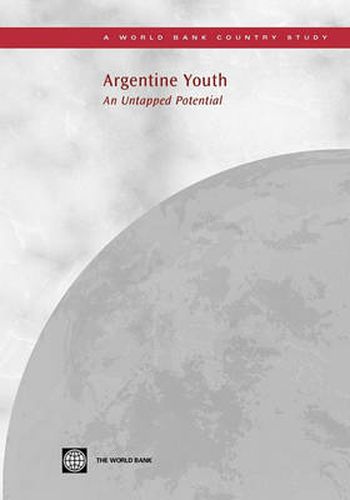Readings Newsletter
Become a Readings Member to make your shopping experience even easier.
Sign in or sign up for free!
You’re not far away from qualifying for FREE standard shipping within Australia
You’ve qualified for FREE standard shipping within Australia
The cart is loading…






Argentina’s youth-6.7 million between the ages of 15 and 24 - are an important, but to a certain extent untapped, resource for development. Over 2 million (31 per cent) have already engaged in risky behaviors, and another 1 million (15 percent) are exposed to risk factors that are correlated with eventual risky behaviors. This totals 46 per cent of youth at some form of risk. This book addresses the risks faced by youth in Argentina such as low education attainment, unemployment, teenage pregnancy, use and abuse of drugs and alcohol, becoming victims of crime, and low level of civic participation, as well as the policy options for addressing them. The chance of reducing the numbers of youth at risk over the long term is greatest by focusing policies and programs on the individual (improving life skills, self-esteem), on key relationships (parents, caregivers, peers), on communities (schools, neighborhoods, police), and on societal laws and norms. Specific recommendations were developed during consultations with government counterparts.
$9.00 standard shipping within Australia
FREE standard shipping within Australia for orders over $100.00
Express & International shipping calculated at checkout
Argentina’s youth-6.7 million between the ages of 15 and 24 - are an important, but to a certain extent untapped, resource for development. Over 2 million (31 per cent) have already engaged in risky behaviors, and another 1 million (15 percent) are exposed to risk factors that are correlated with eventual risky behaviors. This totals 46 per cent of youth at some form of risk. This book addresses the risks faced by youth in Argentina such as low education attainment, unemployment, teenage pregnancy, use and abuse of drugs and alcohol, becoming victims of crime, and low level of civic participation, as well as the policy options for addressing them. The chance of reducing the numbers of youth at risk over the long term is greatest by focusing policies and programs on the individual (improving life skills, self-esteem), on key relationships (parents, caregivers, peers), on communities (schools, neighborhoods, police), and on societal laws and norms. Specific recommendations were developed during consultations with government counterparts.